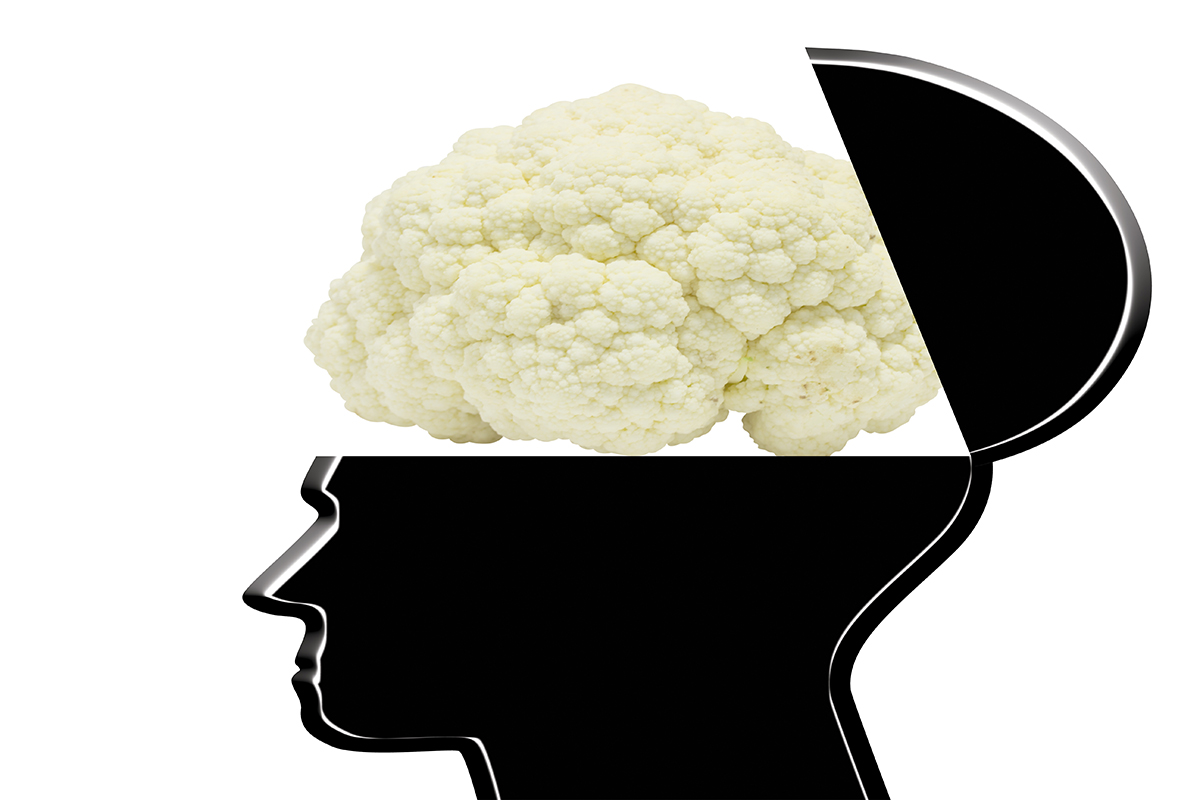The Tufts-Developed ‘Instinct Diet’ May Stop Junk Food Cravings

Cauliflower on the brain. Image via shutterstock
Susan Roberts, a senior scientist at the Nutrition Research Center on Aging at Tufts University, was tired of diets based on just one idea—like simply cutting out carbs and calling it a day. That’s why in 2009 she created her own diet called the “Instinct Diet” (I Diet), that combines weight loss science from around the world with a rigorous behavioral program.
After reviewing before and after brain scans of participants who made the “I Diet” a part of their lives, Roberts found differences in the way subjects reacted to images of food. Now, based on this research, which was published in the September edition of the journal Nutrition & Diabetes, Roberts says her diet can actually change cravings, and make people want to eat healthy foods and avoid junk. “We’re changing food preferences by initially giving [people] familiar tastes but with a different food composition,” Roberts explains. “That holds down their cravings for unhealthy things, and then simultaneously we’re building up their preference for healthy stuff.”
Unlike traditional behavioral programs that rely on goal setting, like Weight Watchers and Jenny Craig, Roberts says her approach works so well because it focuses on two main principles: hunger reduction and changing food preferences. In the first two weeks of the I Diet, Roberts explains, individuals are given specific menus featuring foods that taste similar to “normal” food, like mac ‘n’ cheese, but are specifically composed to suppress hunger and provide optimal nutrition.
“There are actually four things that influence hunger and satiety,” Roberts says. “One is protein level, two is glycemic index, three is fiber, and four is volume. Rather than picking one of those four, I built all four of those in.” Doing so begins to change dieters’ food preferences and prevents them from being hungry, Roberts says. After that, the program shifts to psychological factors like overcoming emotional eating and stress.
It’s a seemingly simple program, but one that Roberts says can actually change the way the brain works in regards to eating. “We’ve put those unhealthful brain circuits to sleep, effectively. Anyone who puts themselves on their menu for a while reproducibly finds a substantial decrease in cravings,” she explains. One caveat: the change may not permanent. “If you said, ‘Okay, I’m done with weight loss, now I’m going to go back to having white bread, pizza, and french fries again,’ you would get those circuits back.”
Despite Roberts’ research, Caroline Apovian, a professor of medicine and pediatrics at Boston University School of Medicine, says she isn’t sure the circuits are ever changed in the first place, though she is guardedly optimistic. “She says it herself in the paper that there were only 13 subjects studied and they’re looking at fMRI, and there’s a lot we don’t know about fMRI,” Apovian says. “Having said that, the study gives us hope that maybe in the future we will find a way to retrain our brain.”
Apovian goes on to say that although she “really believes in [Roberts’] work,” it isn’t drastically different from many other healthy eating plans out there. “It’s a high fiber, low glycemic diet with plenty of fruits and vegetables, whole grains, and lean proteins. That’s regular, good food,” Apovian says. “She combined it with a behavioral intervention and high protein so it’s a typical high protein, high fiber diet that we all use in our practice.”
Roberts herself acknowledges that the Instinct Diet isn’t totally different from others out there—she says it’s just put together more effectively. “We have a better diet recomposition profile,” she says. “We’ve just pulled together modern-day nutrition science in a better way.”


